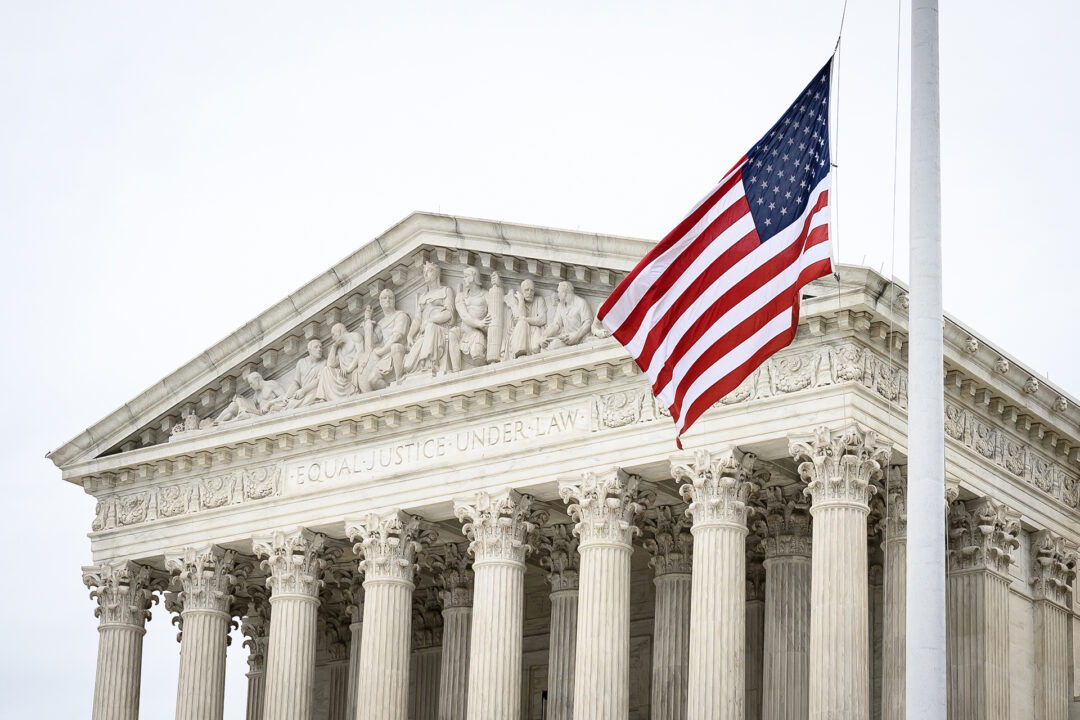While almost all eyes have been focused recently on the U.S. Supreme Court’sDobbs v. Jackson Women’s Health Organizationdecision overturning the pro-abortionRoe v. Wadecase and on theNew York State Rifle & Pistol Associationcase affirming the Second Amendment right to carry arms in public in New York State and elsewhere, the real pivotal Supreme Court case so far this year has been the far-less-noticed case ofWest Virginia v. EPA. In that case, the State of West Virginia sued the U.S. Environmental Protection Agency (EPA) for having overstepped its regulatory mandate when the EPA, in its effort to reduce greenhouse gas emissions dictated that West Virginia’s coal-fired plants generating electricity for the power grid must be transitioned over to renewable sources such as wind and solar.
The case was all going the EPA’s way until it suddenly and finally hit the wall with the U.S. Supreme Court deciding in June 2022 that the EPA had overstepped its mandate. This is significant and has enormous implications for every regulatory agency from the SEC to the FDA, all of whom have been running amok with their own rulemaking and no real oversight by anyone—not by Congress, not by the President, and not by the courts.
Meet the Powerful Fourth Branch of Government
In the American system of government, there is a legislative branch authorized by Article I of the U.S. Constitution, there is an executive branch authorized by Article II, and there is a judicial branch authorized by Article III. Period. One can search all one wants for the Constitution’s similar authorization of a separate administrative bureaucracy, but the search will be in vain. Ostensibly, this fourth branch of government is an outgrowth of and reports to the executive branch.And, yet, over many decades, the administrative agencies of the executive branch have morphed into a gigantic, unelected legislative body all their own and truly accountable to no one. As Jeff Deist, president of the Mises Institute, says, “we are getting an entrenched bureaucratic class with politics largely a side-show.”
With the President’s enormous workload, it is extremely difficult if not impossible for him to keep track of all that the agencies do. Peter J. Wallison, author ofJudicial Fortitude, notes that “only a tiny few ‘major rules’ are even brought to the attention of OMB [Office of Management and Budget] (which is at least within the Executive Office of the President), and fewer still are rules that might ever be brought to the president’s attention” (1).
This lack of accountability is understandable when we realize that U.S. regulatory agencies churn out on average 3,000 new rules every year, and “have issued 101,380 rules since 1993 …. In 2017 Congress enacted 97 laws, but the agencies issued 3,281 rules” (2).
The Supreme Court & Congress Give Their Powers Away
The U.S. Constitution is clear: only Congress may legislate, and it may not delegate its law-making power – neither to the President nor to anyone else! As recently as 1935, the High Court stuck to this position when presented with the issue (3). Unfortunately, under pressure from President Franklin Roosevelt, the Court soon backed away from its principled and constitutional stand; and that was reflected in its decision inUnited States v. Carolene Products Company, 304 U.S. 144 (1938), where it said that a regulatory law will not be struck down as unconstitutional if it has a “rational basis.”So, despite the fact that regulatory agencies were clearly doing what is in the nature of government to always do—expand and accumulate increasing power—the Federal courts retreated from their constitutional duty to decide what the law is and instead allowed the regulatory agencies to craft whatever whimsical and unchallengeable rules they wanted so long as there existed the merest rational basis for them.
This hand-off of power to agencies was not just the fault of the Federal courts, it has also been the fault of Congress itself. For Congress of late has taken the coward’s way out when passing major legislation. It will pass laws that paint broad-brush noble goals for which the legislators may take credit, while leaving all of the messy, unpopular details for the administrative agencies to work out and be blamed for later. One example is the Clean Air Act, where Congress—to much applause—basically told the EPA to clean the air to certain levels but left almost all of the dirty work (such as strict emission standards) for the agency to handle.
The Chevron Case
In 1984, the U.S. Supreme Court heard the case ofChevron, U.S.A., Inc. v. Natural Resources Defense Council, where the oil company Chevron argued that an ambiguity in the Clean Air Act enabled the EPA to essentially fill the gap in the law with whatever “reasonable” interpretation the EPA wanted, in this case, one favorable to Chevron (4). Unfortunately for freedom from arbitrary bureaucratic rule, the Court unanimously decided that when the enabling statute is ambiguous, judges should defer to Federal agencies’ interpretations of their own powers if the interpretation was “reasonable” (5). When the statute is not ambiguous, though, the agency is not entitled to deference (6).This judicial policy became known as theChevrondoctrine, or “Chevrondeference” due to the courts’ abandonment of their constitutional role of legislative interpretation. Thenceforth, encouraged by “Chevrondeference,” the unelected bureaucratic state increasingly issued the rules, interpreted the rules, and enforced the rules, becoming exactly what James Madison described as the “very definition of tyranny” where all powers are concentrated in one set of hands.
For decades, judicial decision after judicial decision fueled the growth and power of the unelected bureaucracy. Deist’s lament that “politics is largely a side-show” has come vividly true as even State courts have largely followed theChevrondoctrine.
In California, for example, an appeals court held that a medical board’s decisions should only be overruled if they were “palpably arbitrary” (7), while in Maryland, the State “review[s] an agency’s decision ‘in the light most favorable to the agency,’ since their decisions … carry with them the presumption of validity” (8). And the U.S. Food and Drug Administration (FDA) is only rarely reined in by the courts and even then givengreatdeference as the “publicly spirited body” that it pretends to be.
Raining on the Parade
Over many years, Justices Clarence Thomas and Neil Gorsuch, and others, have realized that letting unelected bureaucrats engage in what is essentially unaccountable legislation is anti-democratic, has imposed major unnecessary regulatory costs on Americans, and has violated the obligatory constitutional separation of powers.Chevronwas simply bad law.Over the years, a few cracks in theChevrondoctrine had appeared here and there, but came more greatly apparent in the 2013 case ofCity of Arlington v. FCC (9). In this case, a Supreme Court majority, in ruling in favor of the FCC, upheld theChevrondoctrine, but Chief Justice Roberts wrote a strong dissent, joined by two other justices, that challengedChevronand ended emphatically with, “We do not leave it to the agency to decide when it is in charge” (10).
Five years later, in an illegal-immigrant-removal case calledPereira v. Sessions, Justice Kennedy (now retired) concurred in the 8-1 majority opinion, stating for himself and other justices that “[i]t seems necessary and appropriate to reconsider, in an appropriate case, the premises that underlieChevronand how courts have implemented that decision” (11).
That appropriate case came in 2022, when the Supreme Court inWest Virginia v. EPAinvoked the “major questions doctrine” to rule that the Clean Power Plan issued by the Obama administration was unlawful. The major questions doctrine essentially states that for any important or major governmental decision—such as mandating a fundamental change in power sources to fight climate change—agency regulations alone are not enough; Congress must weigh in and specifically legislate on the matter at issue.
As theNew York Timesreported, “[i]n a full-throated 19-page concurring opinion, Justice Neil M. Gorsuch, joined by Justice Samuel A. Alito Jr., elaborated on what the chief justice had written. ‘When Congress seems slow to solve problems, it may be only natural that those in the executive branch might seek to take matters into their own hands,’ Justice Gorsuch wrote. ‘But the Constitution does not authorize agencies to use pen-and-phone regulations as substitutes for laws passed by the people’s representatives’” (12).
An End to Regulatory Dictatorship?
While theWest Virginiacase did not eliminate theChevrondoctrine and therefore one of the pillars of the Administrative Super-State, the Court’s ruling did shave away much of its power. This is an important step towards reining in these anti-democratic and unlawful extensions of government (13).In the health and medical fields, we have been confronted with an intransigent and even hostile FDA, which along with its allies in Congress, has made no secret of its hostility to dietary supplements and any natural remedies or practices that challenge the dominant allopathic medical paradigm of disease-care. The FDA has shown itself to be a rogue agency that ignores the clear wording of the Dietary Supplement Health and Education Act of 1994 (DSHEA) by issuing rules, regulations, and guidelines that flaunt congressional intent and stifle our freedoms, all without any clear benefit except to the FDA’s handlers, the pharmaceutical industry.
The biggest threat to our freedoms comes from the unelected bureaucracy, which thinks of itself as being above the law and able to do whatever it wants. It is time for not just the Supreme Court but for all of us to tell these rogue agencies, “We are not questioning your authority. We are denying its existence.”WF
References
- Peter J. Wallison, Judicial Fortitude – The Last Chance to Rein in the Administrative State, Encounter Books, 2018, p. 143.
- Ibid. at p. xxi, citing Clyde Wayne Crews, Jr., Ten Thousand Commandments: An Annual Snapshot of the Federal Regulatory State – 2018 Edition, Competitive Enterprise Institute, April 19, 2018, p.5.
- Panama Refining Co. v. Ryan, 293 U.S. 388 (1935), and A.L.A. Schechter Poultry Corp. v. United States, 295 U.S. 495 (1935).
- Chevron, U.S.A., Inc. v. Natural Resources Defense Council, Inc., 467 U.S. 837 (1984).
- Ibid. at 844.
- For an excellent discussion of judicial deference, please see “Chevron deference (doctrine) – The Administrative State,” Ballotpedia.org, undated, at https://ballotpedia.org/Chevron_deference_(doctrine).
- Griffiths v. Superior Court of Los Angeles County, 96 Cal App 4th 757, 117 Cal Rptr 2d 445, 458 (2002).
- State Board of Physicians v. Rudman, 185 Md App 1, 968 A2d 606, 615 (2009).
- City of Arlington v. FCC, 569 U.S. 290 (2013).
- Ibid. at 327.
- Pereira v. Sessions, 585 U.S. ___, 138 S.Ct. 2105 (2018)(J. Kennedy, concurring).
- Adam Liptak, “Supreme Court Strips Federal Government of Crucial Tool to Control Pollution,” The New York Times, June 30, 2022, at https://www.nytimes.com/live/2022/06/30/us/supreme-court-epa.










